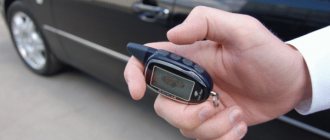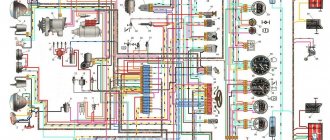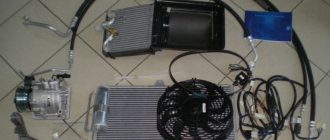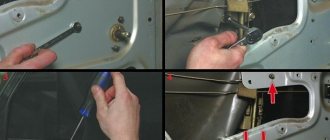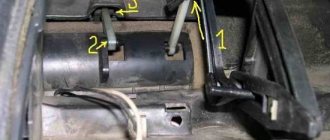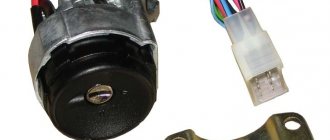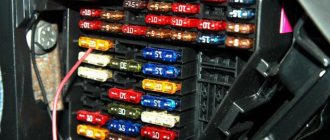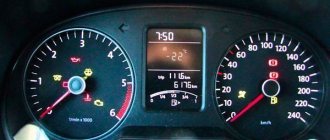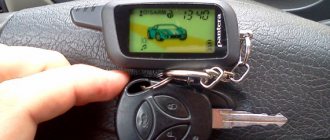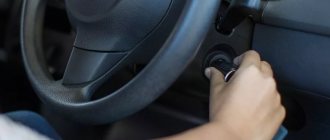In many recent car models, a button is used to start the engine instead of the usual key. How much better and more convenient it is - everyone determines in accordance with their preferences. The appearance of such a new product has caused many drivers to want to install a push-button engine start on their old cars. Therefore, it would be quite appropriate to consider how the ignition and engine starting system can be redesigned in accordance with new trends.
Why is this necessary?
The reasons can be very diverse:
- changed (simplified) engine starting process;
- reducing the number of items in pockets;
- the desire to stand out and many others.
It is best to leave aside attempts to figure out why such a desire arises and understand how to install a button to start the engine (in further text it may be referred to as Start-Stop Engine or abbreviated SSE).
Cars
Instructions for installing the Start-Stop button (Start engine) on a BMW E36.
After the ignition switch started sticking on the E36, the idea of installing a Start engine button came up. The button was ordered here, at that time for 1378 rubles, the parcel arrived on the eighth day.
Inside the box there was everything necessary for connection and installation: a button with wires, a control unit, wiring, two immobilizer key fobs, an RFID ring-reader, a connection diagram.
First I put everything in its place. I placed the ring under the center console near the ashtray.
So that you can simply put your keys with the key fob in this pocket.
The control unit was attached with plastic clamps to a pipe under the dashboard on the driver's side.
At first I wanted to install the button instead of the cigarette lighter, but it turned out to be larger than I thought. The only suitable place for her is here.
To install the button you need to bend the metal ears
and insert the button into the drilled hole, press it firmly and then bend the tabs on the back of the panel.
Engine starting system with a button, options for its implementation
It should be noted right away that there are quite a lot of options for connecting the button. This is due to the fact that such a system can be built taking into account a wide variety of initial conditions. As an example, below are some options for how to install such an element, possible operation algorithms of the Start-Stop Engine and the components used. Which one to choose is up to you. If the level of knowledge of electronics and circuits is high enough, you can make your own based on any of the options, you just need to understand the principle.
How the ignition key can be used:
- the key is inserted into the lock, set to position I, and then, after pressing the button, the engine starts (the key allows you to remove the steering wheel lock, which is available on many cars of the VAZ family);
- the key is not used at all, got into the car - pressed Start-Stop Engine, and the engine started.
- What buttons can be used, their installation, connection diagram:
- without locking, in this case it must be pressed and held until the engine starts;
- with fixation, pressed and released, the beginning of stable operation of the motor will be detected by the electronics and the starter will be turned off.
How the ignition system works:
- its start is carried out separately from starting the engine (pressing Start-Stop Engine turns on the ignition, then presses the brake or clutch again and the engine starts);
- the ignition starts working simultaneously with the engine starting;
- Various blocking of the Start-Stop Engine and ignition is carried out, including (the blocking scheme may involve the use of a signal from a security alarm, an open door sensor, turning on the dimensions, etc.).
These are just some of the possible options and algorithms that allow you to start the engine without a key in the car lock.
Combined rework option (step by step)
The necessary materials for tuning are prepared:
- Three types of relays: ZPTF, 4- and 5-pin;
- Several meters of high-quality wiring with a cross-section of more than one millimeter;
- “Start stop” button;
- Diode and terminals.
You should be armed with all the tools necessary for a tuner, including pliers, wire cutters, etc.
The modification scheme looks like this.
Everything is carried out according to the diagram, but the diode can be installed in any convenient place.
How to make such a launch possible
As an example, several options for implementing such an idea are considered below. It is worth considering that when undertaking such a modernization, you need to understand and understand what and how to do, because you carry out all manipulations at your own peril and risk. If during the work you have doubts about the correctness of the actions, you should seek advice from a specialist (auto electrician).
Scheme of starting an engine from a button using a key
There are a significant number of different options for implementing this approach. For example, the diagram below.
And below is a diagram of connecting the relay to the ignition switch
Everything works extremely simply. The key is inserted into the lock and turned. Then the button is pressed and held until the motor starts. To turn off the entire system, simply turn the key to its original position. With this option, all functions of the ignition switch and immobilizer are retained.
Installing an engine start button without an ignition key
This is a more complex option that allows you to start the engine using a button; this approach uses, for example, RZPTF (rear fog lamp relay). Its activation is shown in the diagram shown in the figure:
An additional advantage will be connecting power to the alarm system. In this case, the operating algorithm will be as follows:
- the car is removed from the alarm system, power is supplied to pin 1 of the RZPTF, and the backlight turns on;
- the button is pressed and held - the ignition and starter relays are turned on, the starter begins to spin;
- the button is held until the engine starts, then it is released, the starter relay is turned off, the engine continues to run;
- pressing again stops the engine;
- After setting the car to the alarm system, the backlight goes out.
How to install a mechanism in a car
Before you begin installing the start/stop button, it is necessary to carry out certain preparatory work, which will depend on the car model. The ignition switch is removed from the car. And if the design of the car does not allow this, then a small hole is made on the dashboard, next to the lock. To cut through it, any available tool will do: a knife or an ordinary household soldering iron. This hole will give access to the wiring (you can make a plug for it later).
Contact vulnerability
ATTENTION! A completely simple way to reduce fuel consumption has been found! Don't believe me? An auto mechanic with 15 years of experience also didn’t believe it until he tried it. And now he saves 35,000 rubles a year on gasoline! Read more"
In cars manufactured more than ten years ago, the starter wires are always connected directly to the ignition switch contacts. The engine starts only after the driver turns the ignition key to the extreme position.
This option for connecting the starter is simple and effective. But contacts are always a problem. Moreover, when the starter device is activated, a huge amount of voltage is generated, causing sparking. Where there is a spark, the contacts burn out, oxides accumulate on them, etc. As a result of this, over time, problems arise with starting the engine; motorists are looking for alternative ways to turn on the starter, including directly from the battery.
As you know, in cars of recent years of production, which do not have a button, an additional relay is provided that controls the starter. In this way, the lock contacts are relieved, which now bear less of a load.
- Systems with a separate relay are more reliable because they last longer.
- The ignition switch contacts also “live” much longer.
- An additional relay can always be upgraded.
Sequence of operations when installing “start/stop” on the ignition switch
To properly install the device into the system, you must follow the sequence of steps below:
- First, the ignition lock cylinder is removed, followed by the lock itself.
The ignition lock cylinder has been removed from its socket.
Harness of cut wires from the ignition switch
The wires on the ignition unit are carefully wrapped with electrical tape
Start/stop button mounted on the car dashboard
Video: installing the “start/stop” key to start the engine
How to connect a button to the starter
However, the topic of this article is connecting the starter via a button connected to the same relay. How can this be accomplished?
Connecting a button in a car where there is no additional relay
First of all, you should find the contacts responsible for turning on the starter. Then integrate them with the button.
The modernization algorithm generally looks like this:
- The plastic trim under the steering wheel is disassembled;
- There is a connector connected to the ignition switch contacts (as a rule, this connector has locking tabs);
- Press the tabs to release the connector and pull it out.
As a rule, on older cars, after inspecting the connector, two cables with a large cross-section are found. The red one is responsible for controlling the starter.
Note. You can check whether the wiring is really responsible for controlling the starter like this. Turn the ignition key all the way, short-circuit both wires from the removed connector. If the starter turns on, then that's what they are.
- The button is placed in a place convenient for the driver;
- The found wires are connected to it.
Connecting a button via a relay
In this case, finding the wires responsible for controlling the starter will be much more difficult, because you need to calculate those that are connected to the additional relay.
Experts recommend first ringing all the wires going to the car body with a tester. The identified wires are marked as negative, since they are connected to ground.
Then you need to connect the tester with one end to each of the positive wires, and the other - connect the measuring device to ground. The device itself must be put into a current measurement operating cycle. Test tasks: find a cable that produces 12V when the key is turned all the way.
The main advantages of using a relay in the starter power circuit:
— Such a system is more reliable, since the relay is designed for high currents and lives much longer. — The relay can always be replaced — The contact group behind the ignition key works for a very long time, since it only turns on the relay that takes the main load.
Regardless of whether your starter is turned on by a relay or directly by a contact group, all operations to connect the starter are still performed by turning the key.
First you need to determine which contacts are responsible for the start and connect them to the start button.
To do this, you need to disassemble the plastic protection under the steering wheel of your car. Very often, a connector with all the necessary wires is connected to the contact group of the key well at the back. There should be locking tabs on both sides of this connector. You need to press on them and pull out the connector.
If you have an old car, inspecting the contact group connector you will most likely find the two thickest wires. Very often one of them is red - these wires are directly connected to the starter. If you connect them with the ignition key turned, your starter will most likely start spinning.
Then you can go the simple way. You can simply install the button and connect these two wires to it, placing the button in a place convenient for you. The button should be non-latching, that is, when pressed, it should close the contacts, and immediately after you release it, open it.
Do not forget that you will operate the button in the same way as a key. We press the button, wait until the starter spins, and as soon as the engine starts, release the button.
But do not forget that very large currents will pass through the button and most likely such a button will burn out.
We used a vandal-proof chrome button - it failed after about half a year.
If you have a newer car and the starter in it is connected using a relay, you will need to find among the many wires exactly those that are responsible for controlling the relay.
To do this, you can ring the tester in resistance measurement mode on all the wires on the car body. All wires that ring are marked as ground (or minus), since they are all shorted to the body.
Next, touch each of the remaining wires with one tester probe and the other probe to the body in voltage measurement mode.
We need to find the wire on which 12 Volts appears exactly at the moment you turn the key, that is, when your starter starts spinning.
Button recommendations
It is desirable that the button does not have various latches inside. In other words, the button should instantly engage the starter and disable it as soon as the button is released. The locking button works a little differently. You have to press it twice to turn off the starter, and this is not so much inconvenient as it is harmful to the starter.
In a word, the principle of operation of the button comes down to the following: the driver holds the button pressed until the engine starts, then releases it, the starter turns off. It turns out to be a convenient option when you operate the button like a key.
The button material also needs to be selected wisely. You should take into account the fact that the button itself can burn out due to the passage of large currents through it. For example, a button made of anti-vandal chrome material fails after just 6 months of use, despite the fact that it is designed for high loads.
Ready-made universal kits
The modern market is replete with ready-made universal kits for starting internal combustion engines from a button. They are sold together with protective systems and are suitable for installation in almost all known car models.
Ready-made kits can provide reliable engine starting. Modernization, if carried out correctly, will easily turn the starting system of a domestic car into a universal and functional element, no different from the standard version of the best foreign cars in the world. However, the kits are not cheap, and if you call a specialist, then along with the installation, the new starting system will require quite a large financial investment. If you know how to install the ignition button, you can save money.
Thus, there are several ways to install a button. Each has its own characteristics, advantages and disadvantages.
- With a key. This ignition option requires a key. An old and proven scheme. Plus - ease of installation, minus - again you need to take the key with you. To start the engine, the driver must press a button.
- The same option, only without a key. The advantages are obvious, but the disadvantage is the complex installation scheme.
- Short press button. It is enough to just hold the button pressed for a second - this will be enough to crank the starter. The advantage of the scheme: the button only gives the starter a command to activate, it rotates until the internal combustion engine starts.
- Long press button. The same thing, only the button is held for a longer period of time. The advantage of the scheme is expressed in the fact that the driver himself controls the rotation of the starter. If he releases the button, the starter will stop rotating.
Keyless start button
It is quite obvious that the starter button in a car increases the ease of use of the vehicle. The standard versions require a mandatory combination of such a Push-Start button with the possibility of Key-Less-Go keyless entry. This combination allows the owner to free himself from the need to use the usual ignition key, replacing it with the so-called electronic key.
Without going into details, an electronic key is a tag by which the owner is identified by anti-theft and other car systems after approaching the vehicle at a certain distance. As for the engine start button, it will only work if the electronic key is in the car.
In practice it looks like this:
- the owner of the electronic key approaches the car;
- at a certain distance, car systems identify the owner by exchanging signals with an electronic key tag;
- then the owner presses a button on the electronic key or simply approaches the car closely;
- after this the door locks are unlocked;
- the driver sits in the seat and presses the engine start button;
It turns out that the electronic key is used by the owner only to forcefully open and close the car doors. The keyless entry and start system performs all other actions automatically. Now let's talk about installing the Start-Stop Engine button yourself.
Start stop button: pros and cons
The button is a small product installed instead of the 3Z or in another part of the car interior. To start the motor, just one finger press is enough. It's simple, convenient and original.
Standard buttons on foreign cars function like this: as soon as the car is disarmed, the driver gets inside, presses the brake pedal and presses the button once. After half a second, the power unit starts. To stop the motor, just press the brake and button again.
Often buttons are equipped with LEDs for ease of use. A glowing indicator lets the driver know that the car was started successfully (on some foreign cars, the level of sound insulation of the body is brought to such a level that you can’t even hear inside the cabin whether the engine is running or not).
Advantages and disadvantages
| Advantages | Flaws | |
| 1 | A light touch is enough to start the engine. | To start the car, you need to sit in it and press the brake pedal. Out of habit, many drivers forget about this |
| 2 | No more need to carry the ignition key with you | There may be difficulties when installing an alarm with heating. So, you will need at least two keychains - one of them must be given to the masters. They will disassemble it, take out the chip and install it in the car. Power will only be supplied at startup |
| 3 | The button can be installed anywhere, including right at hand, which increases ease of use | Installing an alarm on a car with a button usually costs more |
| 4 | A number of options are combined with car alarms, immobilizers and other security systems | |
| 5 | You can lock the car by simply pressing the button on the door, without having to set it to the alarm - this saves time if you leave the car for a short time |
Note. There is an opinion that you won’t be able to get into the car if the battery in the key fob runs out. Actually this is not true. It will be enough to place the key fob on the button side, and if the battery dies, then open the car with the key.
Now you know how to install a button instead of the ignition switch. This can be done with your own hands, saving on the services of expensive specialists.
Forget about fines from cameras! An absolutely legal new product - Traffic Police Camera Jammer, hides your license plates from the cameras that are installed in all cities. More details at the link.
- Absolutely legal (Article 12.2);
- Hides from photo and video recording;
- Suitable for all cars;
- Works through the cigarette lighter connector;
- Does not cause interference to radios and cell phones.
No duplicates found
This babe turns anyone on =)
at one time I even started tanks =)
No, nothing bad, don't think about it. It's more about laughing at your unjustified expectations :))
A friend recently set it for 1200. For you, unlike his beauties, everything worked and you didn’t have to go to a normal electrician on a tow truck
